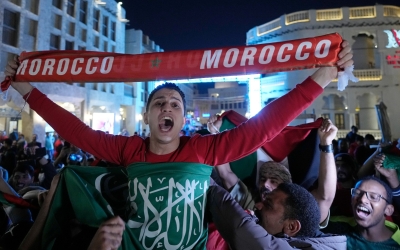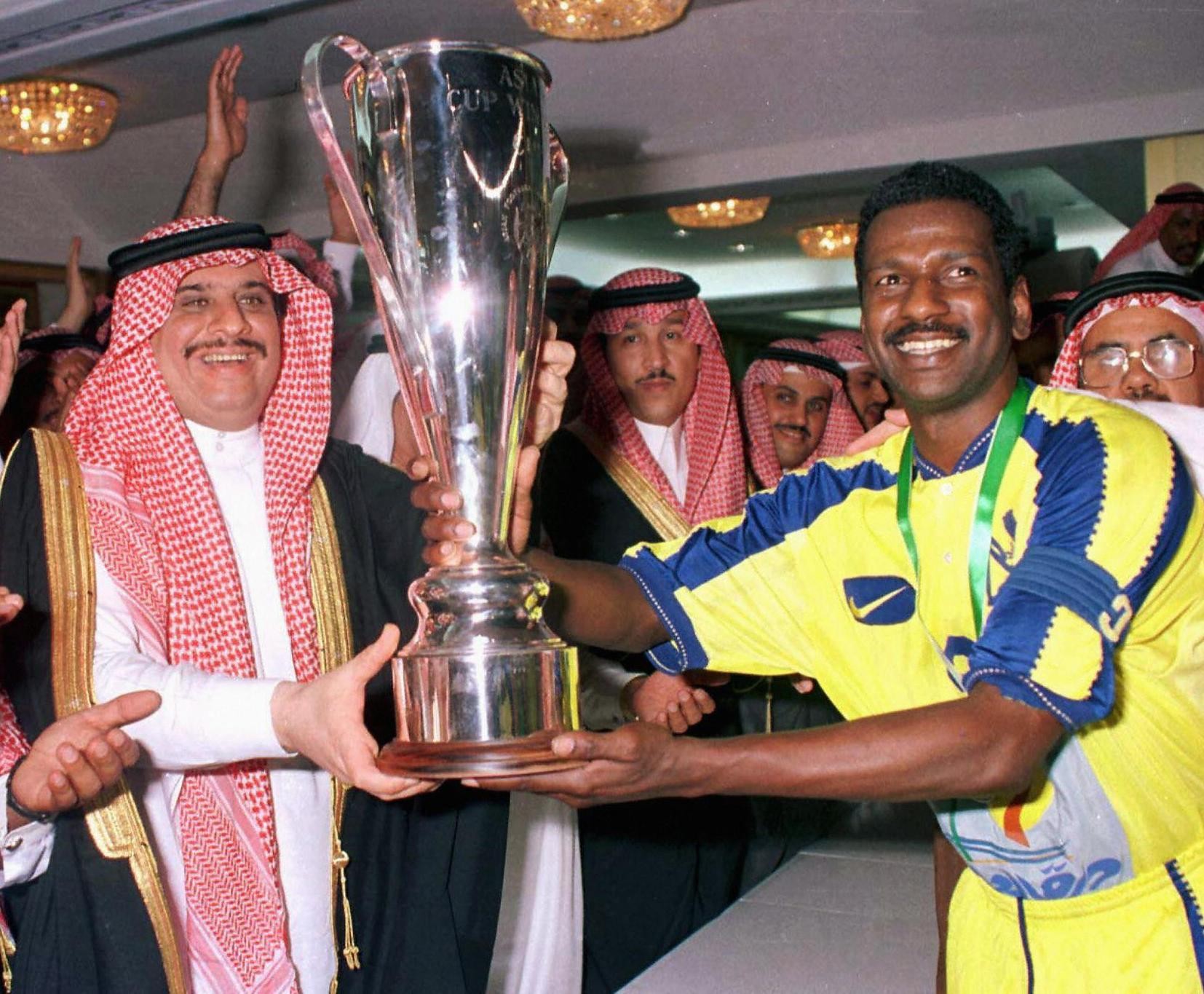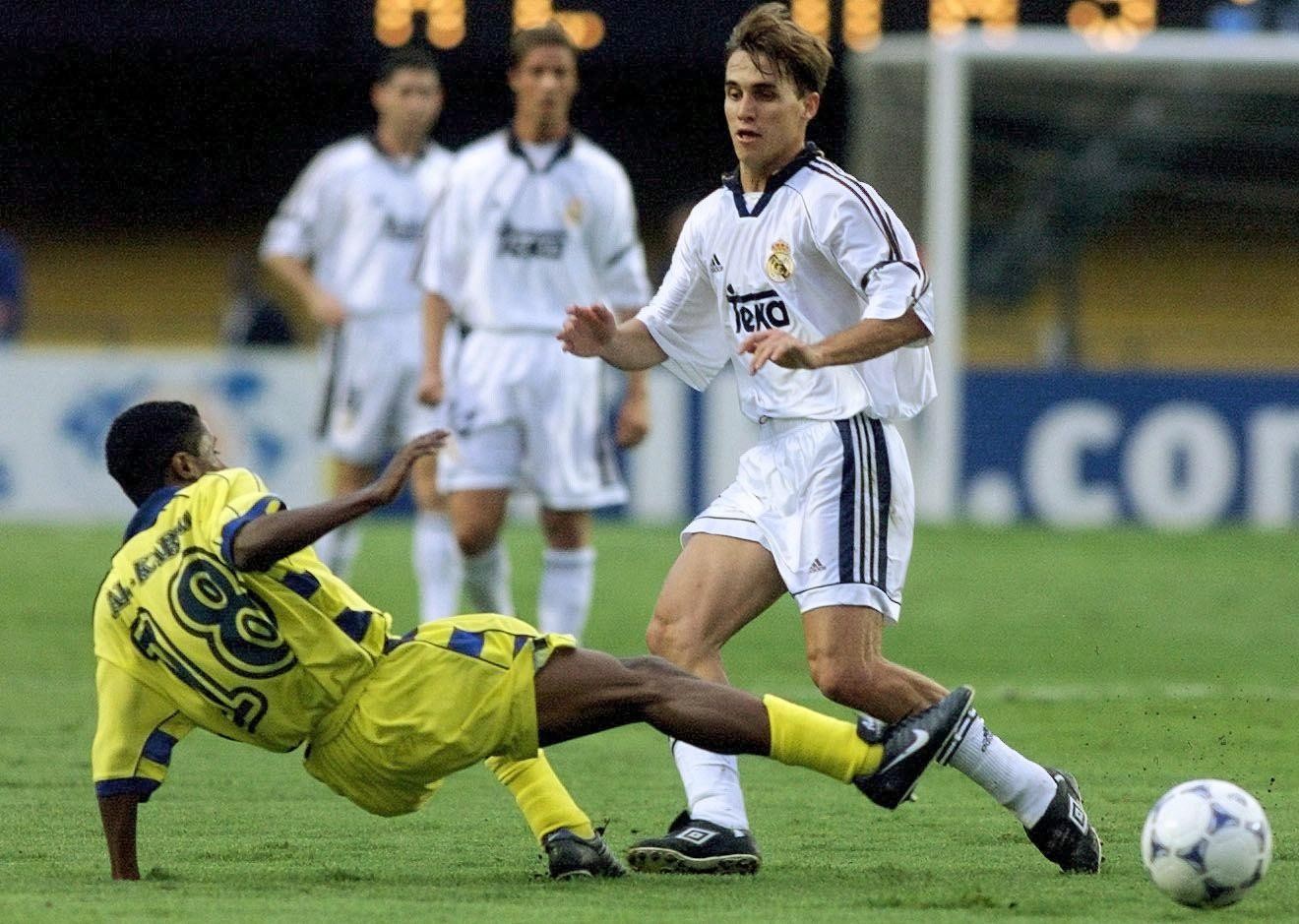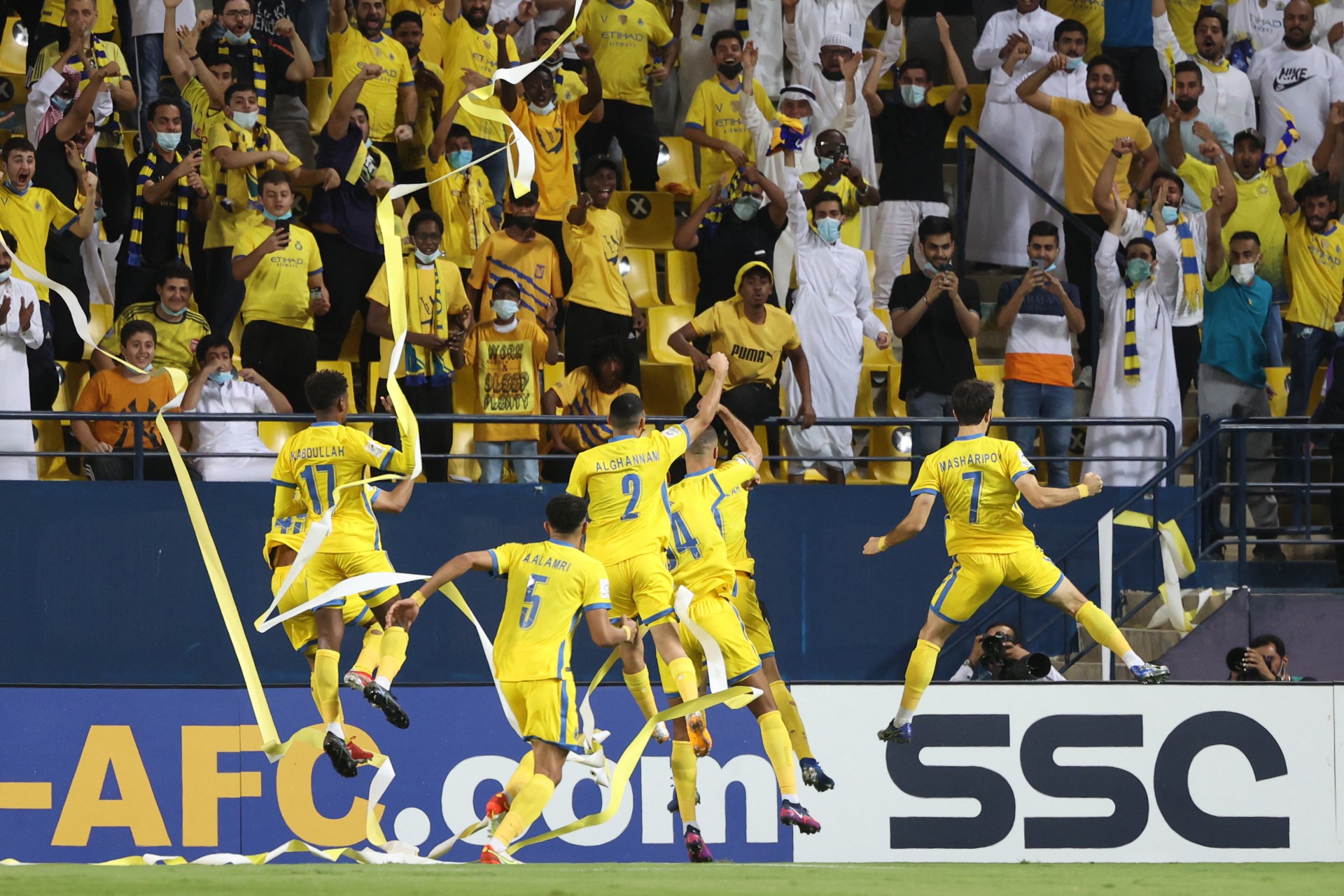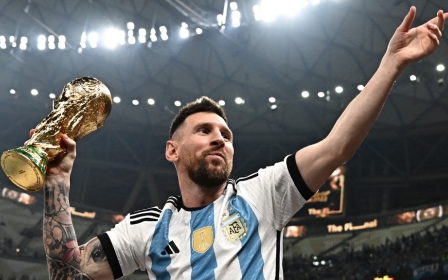Al Nassr: The past and present of Ronaldo's new Saudi team
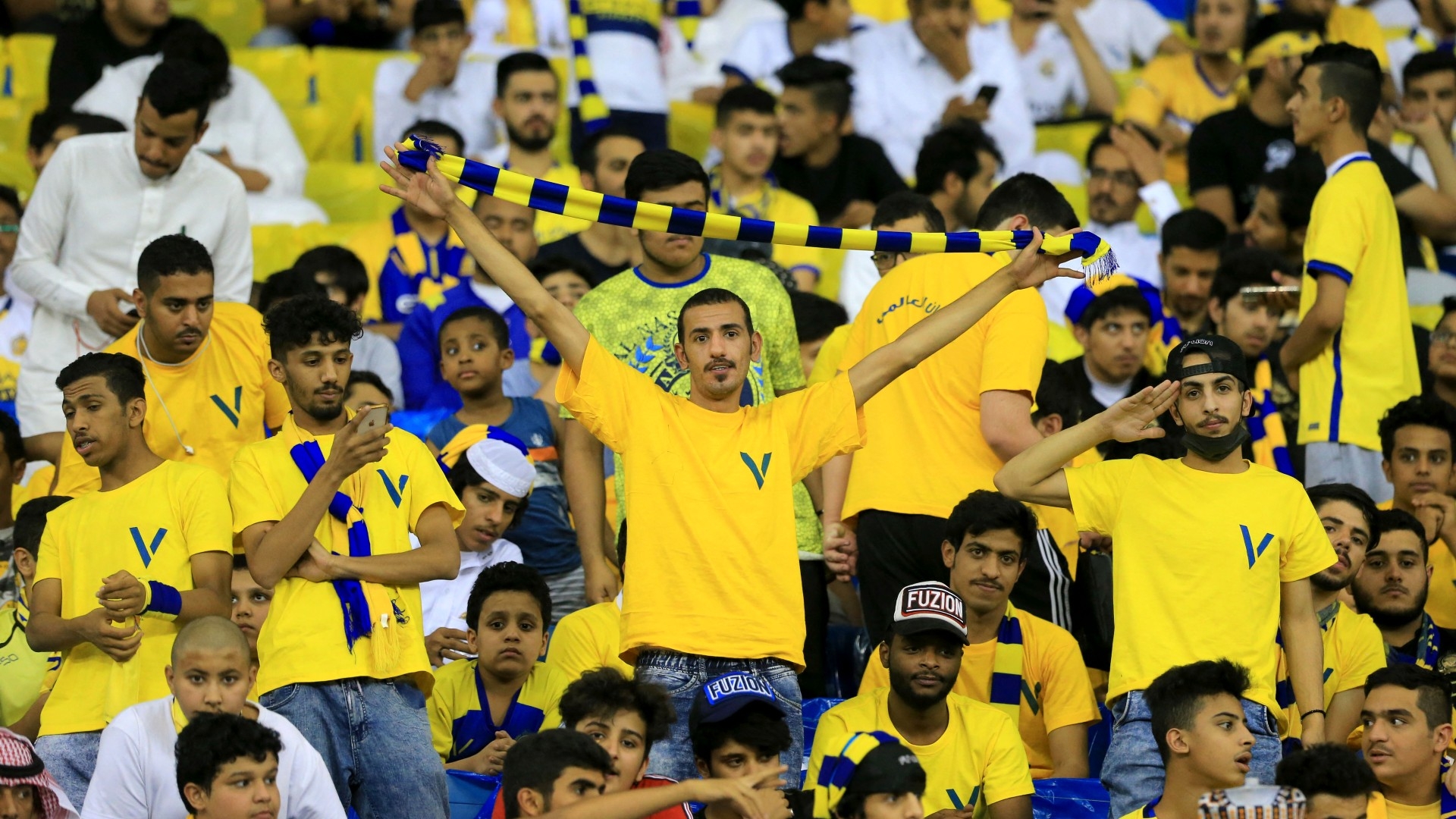
It’s been labelled a “fall from grace”, a savvy personal financial decision, “sportswashing”, a historic coup for football in the Middle East, and every weighty descriptor in between.
Cristiano Ronaldo’s move to Saudi Arabian club Al-Nassr, where he will be officially unveiled on Tuesday, has divided opinion.
The Portuguese football icon arguably brought the debate on himself after a now-infamous interview with Piers Morgan in November in which he burned every bridge with former club Manchester United and sealed his exit.
“It comes back to my gut feeling about you that, if it was just about money, you’d be in Saudi Arabia earning this king’s ransom. But that’s not what motivates you, you want to keep at the top,” Morgan posited in the interview, to which Ronaldo agreed.
And yet, barely a month later, the 37-year-old arrives in the Saudi capital in a $200m-a-year deal that will make him the highest paid footballer of all time.
His unveiling on Tuesday will now be the first of many sold-out events at the 25,000 capacity Mrsool Park Stadium in Riyadh, the forward's new footballing home.
"I'm thrilled for a new experience in a different league and a different country, the vision that Al-Nassr has is very inspiring," Ronaldo said.
The standard of football the five-time Ballon d'Or winner will experience will certainly be below that of his past endeavours, but it will not be plain-sailing.
Nassr, which went from humble beginnings to a princely backed golden era, is not the most successful team in Saudi Arabia, nor even the most successful in Riyadh.
Here's everything you need to know about the past and present of Ronaldo's new team.
Saudi prince propels amateur club
Nassr was first formed in 1955 by Zeid al-Ja’ba, the club’s first president, and his brother Hussain, as a small amateur team based in Riyadh.
The little-known club trained in an old playground near Al-Futah Park, the oldest public green space in the capital.
It was in 1960, when Prince Abdul Rahman bin Saud al Saud took an interest in the club, that Nassr was officially registered by Saudi officials and entered the second division of the domestic league.
Prince Abdul Rahman was the son of King Saud, the country’s second monarch, and grandson of King Abdulaziz, the founder of the Gulf kingdom.
In a now-archived entry of Nassr’s English language website, the prince is described glowingly as “an inspiring man, leader, warrior, and a first-class human rights worker”.
“His personality was strange and unique so that you wouldn't help yourself falling in love with [him] even if you were the most opposed to him,” the site posits.
Although a prominent royal with interests in literature and law and a stint in the finance ministry, Abdul Rahman, who died in 2004, was best known for serving as Nassr’s president for nearly four decades.
According to the website, his interest in the club curiously stemmed from his obsession with anything related to “victory” - the meaning of the word Nassr.
He decided that the club’s crest would be blue and yellow - on account of the colours of the Saudi desert and the various seas and gulfs surrounding the Arabian peninsula.
Since Abdul Rahman’s death, Nassr’s presidents have mostly been fellow members of the royal family, though the current president is Musalli Al-Muammar, a sports administrator who is the former head of the Saudi Pro-League.
‘Golden trio’ spark success
Just three years after becoming professional, Nassr were promoted to the first division of the Saudi Pro League, beginning their steady ascent to the top of the domestic charts.
It was in the 1970s and 80s when the team became a real force, helped in the latter decade by a trio of homegrown superstars.
Nassr won a host of domestic honours across those two decades: four league titles, three Federation Cups, six King’s Cups and three Crown Prince Cups.
The team’s success was built around the "Saudi Golden Trio" of Majed Abdullah, Fahd al-Herafy and Mohaisn al-Jam’aan, all of whom spent their entire playing careers at the club.
Abdullah, perhaps the greatest Saudi footballer ever, still remains the all time top scorer in the Pro League with 189 goals in 194 games for Nassr.
He is also the all time record goalscorer for the Saudi national team, with a remarkable 72 goals in 117 games.
That makes Abdullah the 17th highest male international goalscorer of all time - a list which is topped by the only Nassr player more famous than him: Ronaldo (with a mind-boggling 118 goals for Portugal).
In the 1990s, the trio guided the club to another two league titles, a King’s Cup and a Federation Cup.
Global titles and stars
It was in that decade that Nassr went international.
They won two GCC Champions Leagues (a now defunct club tournament featuring teams from the Gulf), an Asian Cup Winners’ Cup and one Asian Super Cup.
Success in the latter made them the first Asian team to participate in the Fifa Club World Cup, which included a group stage game against Real Madrid.
But after the retirement of the famed trio, the club spent several years struggling to repeat past successes, and narrowly avoided relegation in 2007.
They eventually returned to winning ways in 2014, winning back-to-back league titles and a string of domestic cups.
Ronaldo isn’t the only foreign superstar to play for the Saudi outfit: fellow Ballon d’Or winner Hristo Stoichov played for the team in 1998 (albeit for just two games), in addition to Brazilian World Cup winner Denilson in 2006.
The current squad features a number of internationals, including striker Vincent Aboubakar - fresh off the back of two exquisite goals for Cameroon at the World Cup, former Benfica forward Talisca, Colombian national team goalkeeper David Ospina and former Uefa Champions League winner Luiz Gustavo.
The team has been managed by a host of foreign coaches too, including Ballon d’Or recipient and World Cup winner Fabio Cannavaro and former Colombian goalkeeper Rene Higuita (of scorpion-kick fame).
Current manager Rudi Garcia has previously coached Marseille and Lyon in France.
Ronaldo still not in the Champions League
When Ronaldo first attempted to leave Manchester United in the summer, it was believed that he wanted to find a team in the Uefa Champions League (a tournament in which he is the all-time leading goalscorer, which United failed to qualify for this year).
A move was not forthcoming, and he is now at a Saudi team which is also not featuring in the Asian equivalent.
Nassr failed to qualify for this year’s AFC Champions League after finishing third in the league last season and not winning any cup competitions.
In fact, Ronaldo joins a team which is by no means a serial winner on the continental stage.
Local Riyadh rivals Al-Hilal have won four Champions League titles (more than any other Asian team), while Jeddah-based Al-Ittihad have won two.
Nassr have never won the trophy despite domestic success, making them something of an Arsenal of Saudi football: successful at domestic level, but as yet unable to repeat it globally.
So far this season they sit narrowly at the top of the league, giving them a huge opportunity to re-establish themselves on the global stage.
While Ronaldo has experience playing in several local European rivalries: the Manchester derby (between United and City), the Derby de Lisboa (Benfica vs Sporting Lisbon), El Classico (Barcelona vs Real Madrid) and Derby della Mole (Juventus vs Torino), now he will experience the famed Riyadh rivalry between Nassr and Hilal.
His now rivals Hilal, the most successful Saudi team of all time with 18 league titles and a vast array of other titles, have already started to poke fun at Nassr’s new star by reportedly printing shirts with the name of longtime foe Lionel Messi.
It's been widely reported that off the pitch, Ronaldo's presence will be utilised to help Saudi Arabia's bid to co-host the 2030 World Cup with Egypt and Greece.
But first, on the pitch, Nassr will need him to help roll back the glory years of the golden trio and break new ground on the continent.
Middle East Eye propose une couverture et une analyse indépendantes et incomparables du Moyen-Orient, de l’Afrique du Nord et d’autres régions du monde. Pour en savoir plus sur la reprise de ce contenu et les frais qui s’appliquent, veuillez remplir ce formulaire [en anglais]. Pour en savoir plus sur MEE, cliquez ici [en anglais].


